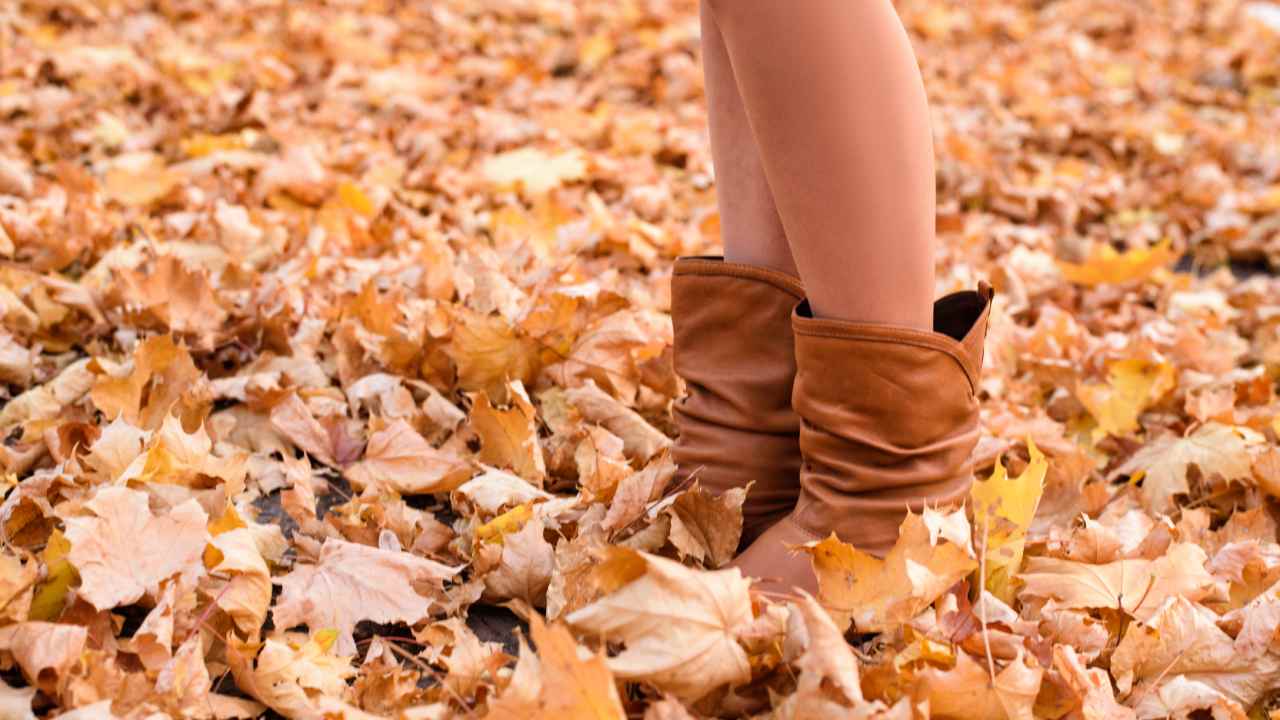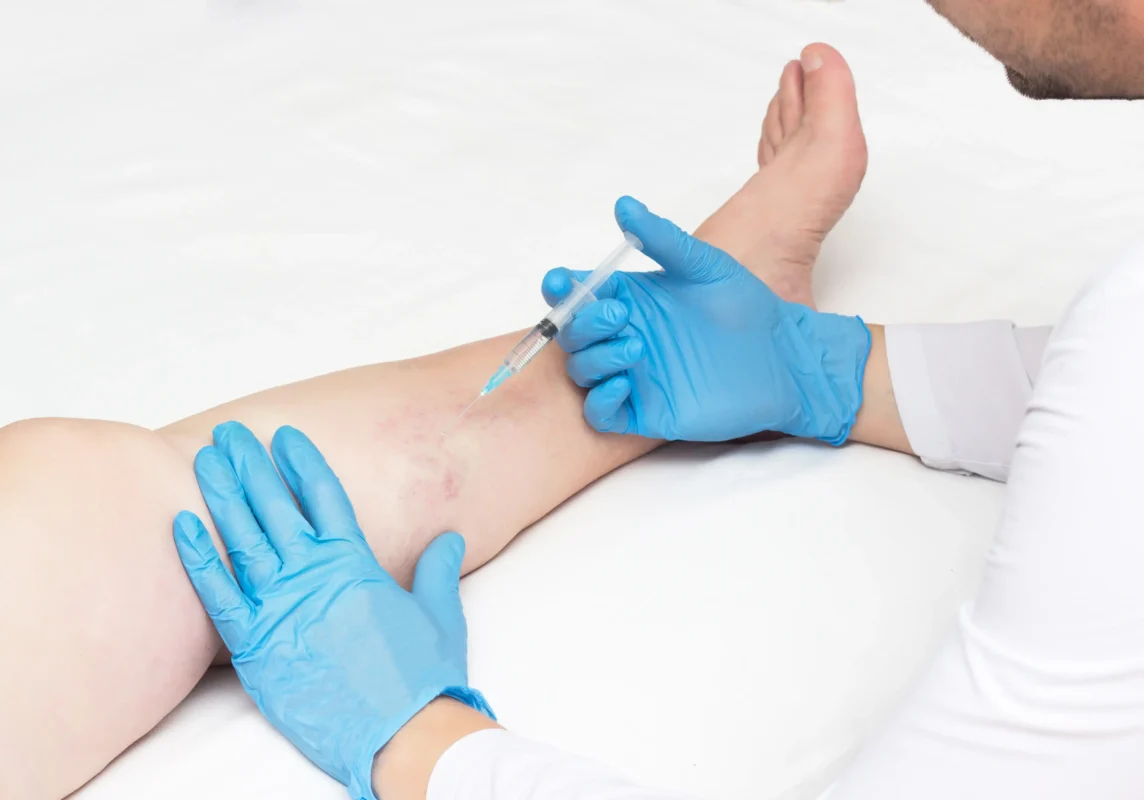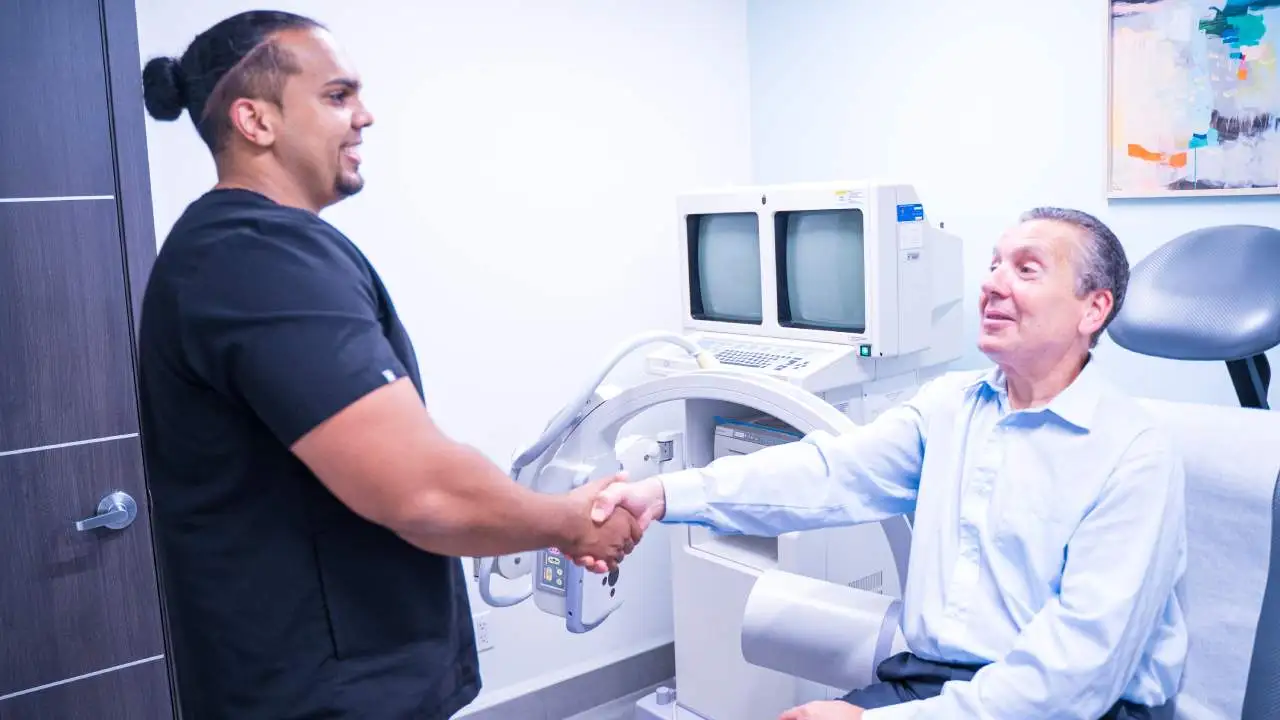As the crisp air of fall settles in, you might be more motivated to embrace the outdoors and participate in fall activities. From hiking in the colorful foliage to getting cozy in warm layers, autumn brings a refreshing change. But if you struggle with varicose veins, the colder weather and increased activity can present new challenges for your vein health. Maybe you’ve noticed more swelling in your legs or increased discomfort after a long day out.
At Vein Treatment Clinic, we understand how the change in seasons can impact your varicose veins and overall vein health. The good news is that by taking a few proactive steps, you can enjoy the beauty of the season while controlling your symptoms. In this article, we’ll share essential tips on managing varicose veins during the fall weather. Our team of board-certified vein doctors is here to provide expert care, ensuring you get the most effective vein treatments.
How Fall Weather Affects Varicose Veins
The drop in temperature during fall may feel refreshing, but for those with varicose veins, cooler weather can cause symptoms to worsen. The shift from warm to cold affects your body’s circulation, often leading to poor blood flow, especially in the legs. Your veins work harder to pump blood back to your heart, and if they’re already weakened, you might experience more leg swelling, leg pain, and leg heaviness in your legs.
Increased physical activity, like raking leaves or hiking, combined with the constriction from fall boots and heavy clothing, can exacerbate these symptoms of venous insufficiency. Fall weather might also make you more prone to staying indoors, leading to a sedentary lifestyle that further impedes circulation and aggravates varicose veins. Fortunately, there are ways to mitigate these seasonal changes and prevent your symptoms from getting worse.
Stay Active to Promote Healthy Circulation
It’s tempting to stay cozy inside when the temperatures drop, but staying active is crucial for maintaining healthy circulation and preventing varicose veins from worsening. Regular physical activity helps strengthen your leg muscles, which in turn supports your veins in pushing blood back toward your heart.
Consider incorporating low-impact exercises like walking, cycling, or swimming into your fall routine. These activities get your blood flowing without putting too much strain on your veins. Even simple activities like stretching, taking short walks during the day, or standing up regularly can make a significant difference. If you find that your legs ache after prolonged periods of standing or sitting, try elevating your legs to encourage better blood flow.
Choose Compression Stockings for Extra Support
Fall is the perfect season to start wearing compression stockings. As the weather cools down, compression stockings offer both warmth and support. These specially designed stockings gently apply pressure to your legs, helping your veins move blood more efficiently back to your heart. Compression stockings can reduce swelling, alleviate discomfort, and prevent your varicose veins from worsening as you go about your day.
Whether running errands or heading out for a brisk autumn walk, compression stockings can make a noticeable difference in how your legs feel. Consider talking to a vein specialist to determine which compression level is right for you. Our vein doctors can guide you in selecting the best compression therapy based on the severity of your varicose veins. Contact us for insurance verification and see if your compression therapy may be covered.
Dress Smart: Choose Loose, Comfortable Clothing
While it’s tempting to bundle up in tight jeans or leggings as temperatures drop, these restrictive clothing choices can worsen varicose veins. Tight clothing around your waist, thighs, or legs can hinder blood flow and lead to increased pressure on your veins, exacerbating your symptoms. Instead, opt for loose, breathable clothing that allows your blood to circulate freely.
Look for garments made of stretchy fabrics, or choose pants that provide support without constriction. Layering in breathable fabrics can keep you warm without compromising your circulation. Pairing your fall wardrobe with appropriate footwear is also essential—avoid high heels or boots that squeeze your calves, as they can interfere with vein function. Supportive shoes that offer stability are your best bet for keeping your legs healthy during fall activities.
Stay Hydrated and Eat Vein-Friendly Foods
Cooler weather might make you less inclined to drink water, but staying hydrated is essential for maintaining proper circulation and vein health. Dehydration can cause blood to thicken, making it harder for your veins to pump blood back to the heart. Drink plenty of water throughout the day, especially if you’re spending time outdoors or engaging in physical activities.
A diet rich in fiber, antioxidants, and anti-inflammatory foods can also benefit your veins. Incorporate foods like leafy greens, berries, and citrus fruits, which are known for improving circulation and reducing inflammation. Avoid foods high in salt, as excess sodium can lead to water retention, increasing the pressure in your veins. By making mindful choices in your diet, you can support your vein health from the inside out.
Seek Vein Treatment for Persistent Symptoms
While fall weather care can help manage mild varicose vein symptoms, some cases require vein treatment. Vein Treatment Clinic offers a range of minimally invasive vein treatments to treat varicose veins, including sclerotherapy, endovenous laser ablation, radiofrequency ablation, VenaSeal, ClariVein, and ambulatory phlebectomy. These vein treatments address the underlying cause of your varicose veins and provide long-term relief.
If your varicose veins are causing persistent symptoms such as swelling, pain, or skin changes, seeking medical advice is essential. Learn about our vein treatments and find out which option is right for you. At Vein Treatment Clinic, our board-certified vein doctors will perform a thorough evaluation using duplex ultrasound to determine the best course of action.
Most of our vein treatments are covered by medical insurance if deemed medically necessary. While spider veins are often considered cosmetic, treatments addressing the root cause of venous insufficiency are typically covered. This means that your insurance could also cover procedures like sclerotherapy if you’re diagnosed with underlying vein issues. Contact us to request insurance verification and learn more about your coverage options.
Enjoy Fall While Caring for Your Vein Health
Fall is a beautiful season full of opportunities to enjoy outdoor activities and cozy gatherings. By taking simple steps to manage your varicose veins—such as staying active, wearing compression stockings, and making smart clothing choices—you can prevent your symptoms from worsening.
At Vein Treatment Clinic, we’re dedicated to helping you maintain healthy veins, regardless of the season. Our minimally invasive vein treatments can provide relief and improve your quality of life. Learn about our vein clinics in New York, New Jersey, Long Island, California, and beyond, and schedule a consultation with one of our experienced vein specialists.









